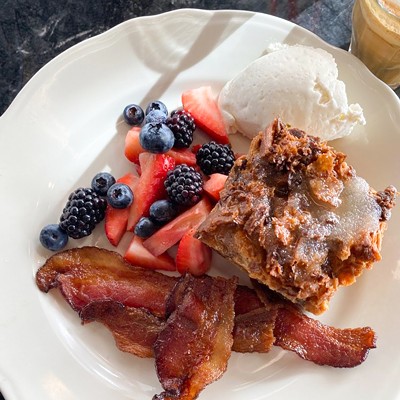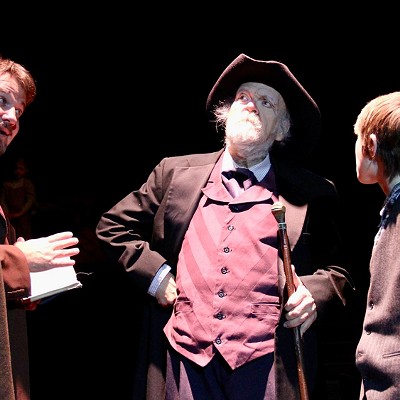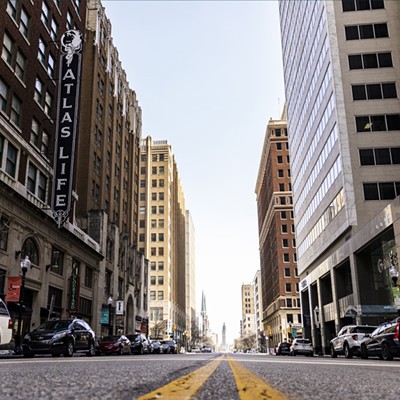
Like Prohibition, which the state did not repeal until 1959, the issue long had been framed as one of moral responsibility. In America, tattoos were associated with the criminal fringe, even as soldiers returned home from wars with tattoos acquired while overseas.
Oklahoma and other states responded by banning the practice, fearing it would spur youth delinquency and, perhaps more broadly, the decline of Western civilization.
But the last half of the 20th century saw a sharp left turn in how tattooing was perceived and utilized. States began to repeal bans in favor of heavy regulation, reasoning that controlled legalization would cut down on illegal tattooing — which was often unsanitary and dangerous — and provide new lines of tax revenue.
Ink spots
Jason King, owner of Atomic Lotus Tattoo and 23rd Street Body Piercing, contends the final nail in the coffin for Oklahoma’s anti-tattoo lawmakers came in an unlikely form: a reality television show.
“Miami Ink came on, and America suddenly had a tattoo shop in its living room once a week,” said King. “It wasn’t a bunch of drug addicts; it wasn’t Harley-Davidsons parked in the lobby. It wasn’t punk rock; it wasn’t the dregs of society getting tattoos. It was people’s sons and daughters.”
The cable series premiered in July 2005, months before Senate Bill 806, which legalized tattooing in the state, had its day in the House.
King credited Miami Ink with portraying the process in a way that quelled fears and opened the eyes of Oklahoma’s more conservative lawmakers.
“And like magic,” he said, “that block that had happened for all those years suddenly evaporated.”
Now, that’s all water under the bridge, or ink under the needle. King opened Atomic Lotus in June 2006, barely a month after then-Gov. Brad Henry signed SB 806 into law.
Tattooing is more popular than ever, in King’s estimation. Indeed, YellowPages.com lists 48 businesses offering such services in the OKC metro alone. King, his arms sleeved in tattoos, said his clientele is diverse.
“Tattooing used to be for bikers and sailors. Now, it’s not,” he said. “You go on any campus, even a conservative campus like, and you’re going to see tons of tattoos and piercings. And it doesn’t mean anything.”

Credit: Shannon Cornman
The unemployment line
Tattooing’s
place in the workforce also has changed. Rather than discount a
potential employee because of visible ink, employers instead may opt for
simple solutions such as long-sleeve shirts and makeup, while other
employees allow tattoos to be displayed openly.
Tattoos
still may scare employers, but they’re no longer perceived as
indicative of a potential employee’s character. “We call the elbow the
unemployment line. As long as you’re clean on your hands, face, neck and
forearms, nobody cares,” King said. “But we’ve got clients who are
teachers who are fully sleeved. We have some attorneys who are fully
sleeved as well.”
As
if on cue, a mother and her teenage daughter entered the shop. They were
dressed casually and conservatively, and looked as if they could’ve
come from the mall or a soccer game.
King
asked how he could help them. The mother removed her shoe and handed
him a small piece of paper with “Dioko” printed in an ornate, curvy
font.
“I’d like to get this tattooed on my foot,” she said with a faint Oklahoma drawl.
King
explained that the skin and bone on top of the foot is a troublesome
area for tattooing, so they would have to be very careful in the
design’s placement.
Eventually, he asked her about the meaning of the word.
“‘Dioko’ is Greek for ‘pursued,’” she said. “God pursued me.”
Her daughter beamed with pride.
Tat for tat
David
Ruiz, one of Atomic Lotus’ resident artists, moved from Texas to
Oklahoma specifically to work at King’s shop. An artist for 13 years, he
was about to give me my first tattoo.
He
led me to a small, sterile room that looked like a dentist’s office,
tied together by a monolithic chair in which Ruiz instructed me to sit.
As
he laid the sketch imprint of my selected tattoo — a Gothic, birdlike
creature designed for me by a friend — over my upper right arm, I asked
if there was any design that he’d refuse to give.
Ruiz said while he is fairly easygoing when it comes to what and where, he’s not a fan of the genital area (“It’s just awkward”) or anything racist or gang-related.
Ruiz raised his needle and began to drill, which felt like the unending sting of a relentless bumblebee.
Two
hours later, I was freshly inked and a bit sore. He laid gauze over my
arm and instructed me in the care of the tattoo. I was given an
antimicrobial soap and told to wash and moisturize every few hours for
the next several weeks.
King came in and asked how I felt.
He
looked at my tattoo, laughed and shook his head: “Well, that’s
different.” His judgment was good-natured and inoffensive, but once he
left, Ruiz offered me reassurance.
“I
think it’s badass,” he said. Before the bandage was taped down, I
snapped a picture and texted it to my father with the caption, “New
Tattoo.”
Dad’s response: “I hope you’re kidding.”
Tattoo you
Bobby Deneen, an artist at Cannibal Graphics Custom Tattoos,
6444 Northwest Expressway, said the most common tattoos he’s asked to
create are flowers and skulls..
Thinking about a tattoo but don’t know what to get? You could go for the tried-and-true.
Bobby
Deneen, an artist at Cannibal Graphics Custom Tattoos, 6444 Northwest
Expressway, said the most common tattoos he’s asked to create are
flowers and skulls.
If those don’t strike your fancy, you could go for something a little more spiritual.
Jamie
Allen, an artist at Altered Images, 12325 N. May, said he sees a lot of
customers get infinity signs with the words “faith,” “hope,” or “love.”
Deneen said men tend to get tattoos on their upper arms, while women usually get tats on their sides or hips.
While both artists said that their ratio of male-to-female customers is about 50-50, the average age varies.
“It ranges anywhere from underage people trying to get a tattoo to people in their early 70s,” Allen said.
The
two have had their share of curious design requests. The strangest of
these usually involve intimate locations and quirky humor.
“One woman got a pot of gold pouring into her vagina.” Deneen said with a laugh. “She said she had a golden vagina.”
Allen
said that the weirdest request he’d ever heard was for a palm tree
“near the vaginal area” that was “kinda shaped like a penis.” —Alyssa Grimley











